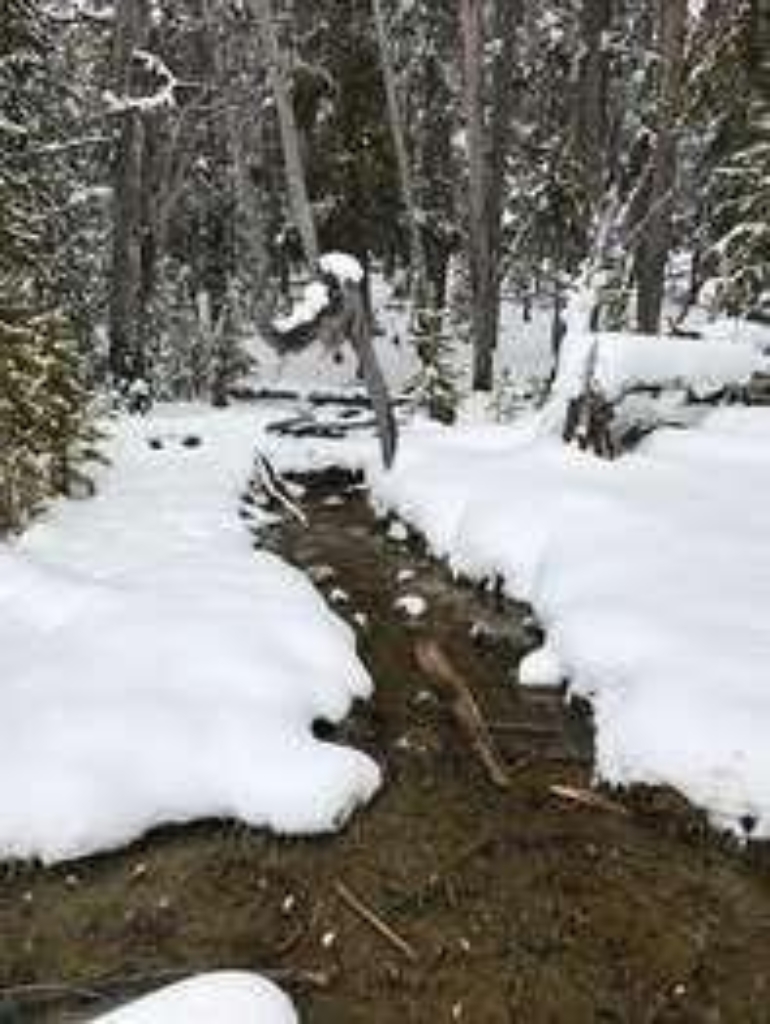
This part of the boardwalk takes you through the edge of a lodgepole pine forest, the main type of forest found in the park. Below the pines are several wetland seeps. Seeps like these can provide habitat for rare plants.
Lodgepole Pine
The lodgepole pine (Pinus contorta) is by far the most common tree in Yellowstone. Early botanical explorers first encountered the species along the West Coast where it is often contorted into a twisted tree by the wind, and thus named it Pinus contorta var. contorta. The Rocky Mountain variety, which grows very straight, is Pinus contorta var. latifolia. Some American Indian tribes used this tree to make the frames of their tipis or lodges, hence the name “lodgepole” pine.
Lodgepoles are the only pine in Yellowstone whose needles grow in groups of two. The bark is typically somewhat brown to yellowish, but a grayish-black fungus often grows on the shady parts of the bark, giving the tree a dark cast. The species is shade intolerant; any branches left in the shade below the canopy will wither and fall off the tree. Lodgepoles growing by themselves will often have branches all the way to the base of the trunk because sunlight can reach the whole tree.
Wetlands
Approximately 38% of the park’s plant species—including half of the rare plants—are associated with wetlands and 11% grow only in wetlands. Wetlands provide essential habitat for Yellowstone’s rare plants, thermal species, reptiles and amphibians, and for numerous insects, birds and fish.
Is there something we missed for this itinerary?
Itineraries across USA


















































